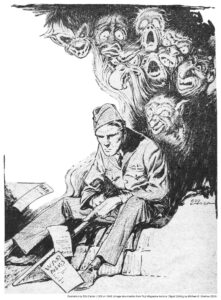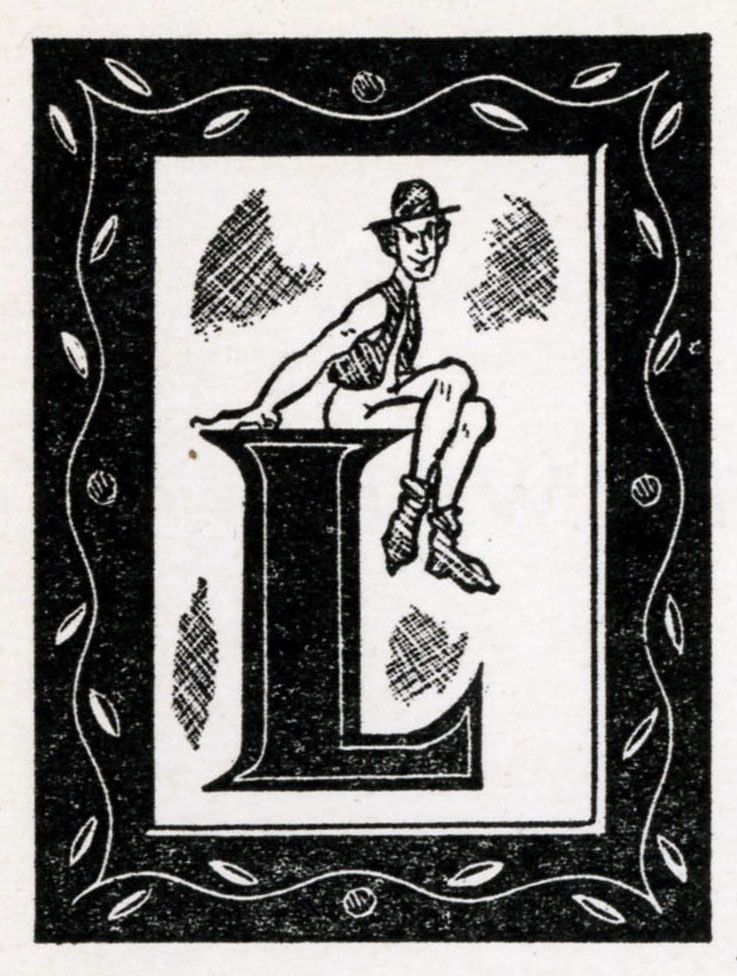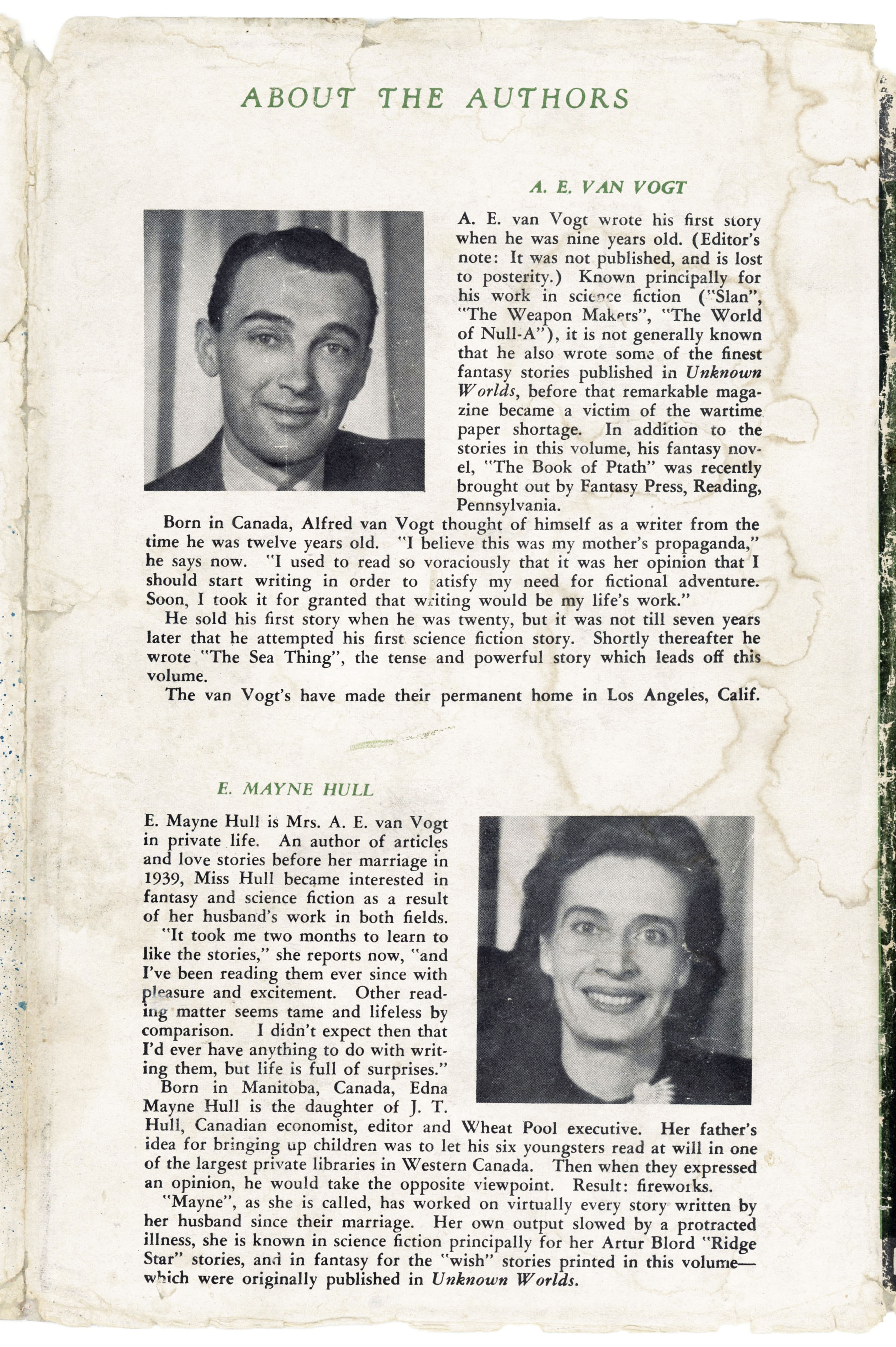Though I’ve not read L. Ron Hubbard’s Death’s Deputy – first published in the February, 1940 issue of Unknown, and then in book form by the Fantasy Publishing Company Inc., in 1948 – the book’s simple premise would have been the solid basis for an episode of such a program as “The Twilight Zone” (the original series), but I don’t think the tale’s actually been adapted for film or television. Was the plot of Hubbard’s story inspired by vaguely remembered winds of mythology, or, discussions with other writers of fantasy and science-fiction? Perhaps both.
A summary of the plot, taken verbatim from the dust jacket of the 1948 edition, follows:
DEATH’S DEPUTY
by L. Ron Hubbard
This story is terrifyingly real because the basic concept is known fact. The term “accident prone” is a familiar one. It applies to those certain men and women who are ever-present when danger and death strikes but have an uncanny immunity themselves. During the Middle Ages they were believed possessed of “the evil eye”. Sailors called them “jonahs”. Modern society sometimes refers to them as jinxes. DEATH’S DEPUTY is the story of such a man: a man possessed of the evil eye, a Jonah, a jinx, an accident-prone – this was Clayton McLean.
After McLean’s life is twice saved by a strange power he becomes its unwilling instrument of destruction, bringing misery and death to his fellow beings. Some happiness comes to McLean through his deep love for Laura, and for a short period after their marriage he is content. But his presence continues to mean havoc for innocent people. Embittered and harassed by his experiences McLean attempts suicide – but the gods protect those who serve them.
The currents of sorrow and love, death and fortune, wisdom and bewilderment, combine to make DEATH’S DEPUTY a novel of stunning impact.
Here’s the cover of the February, 1940 issue of Unknown, featuring art by Edd Cartier, who also completed the three illustrations that accompanied Hubbard’s text. (You can view this cover in a different context, in my post about Virgil Finlay: “Virgil Finlay – Dean of Science Fiction Artists”, by Sam Moskowitz, in Worlds of Tomorrow – November, 1965“.
Here are three of Cartier’s six illustrations for the story, all immediately recognizable by his distinctive style, which combines attention to detail, precise and pertinent exaggeration, and elements of mystery and myth. Note that in the last of the three images (from page 30) the face of Death’s “messenger” is shielded from view…
A giant finger – or was it smoke? –
twitched at the tangled lines.
A giant arm –
a swirl of smoke from the flaming plane? –
eased him till the freed parachute snapped open.
(page 16)

He sat on the bench with his useless leg before him,
and his own fears and futility howled in his ears –
(page 21)

“You will come,” the messenger mumbled in his brain.
“Your master has called – “
(page 30)
((Compare to cover of The Acolyte.))
And otherwise…
“Death’s Deputy”, at…
Fantasy Publishing Company Inc., at …

















